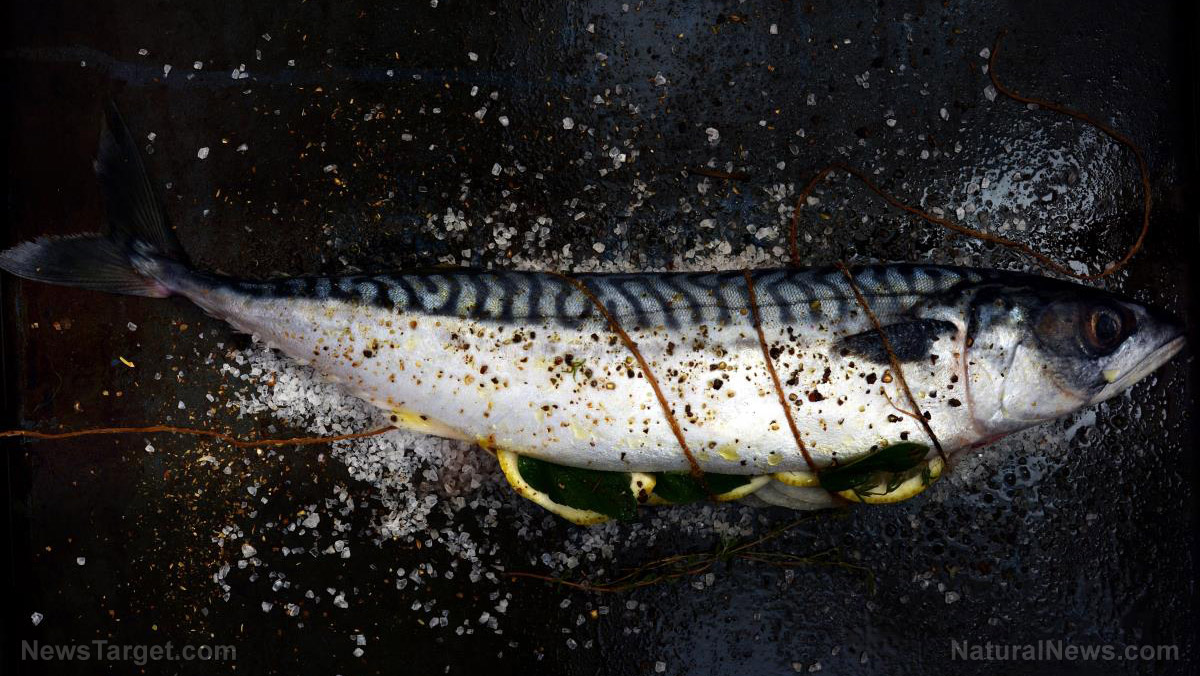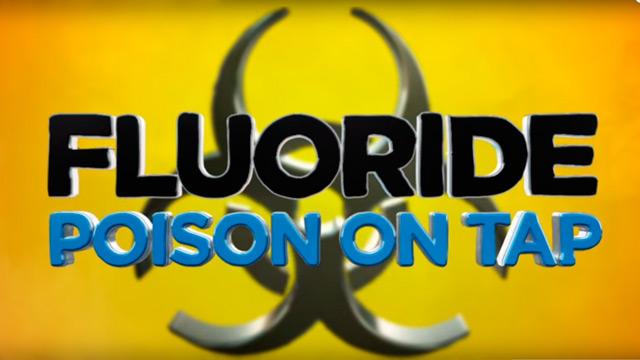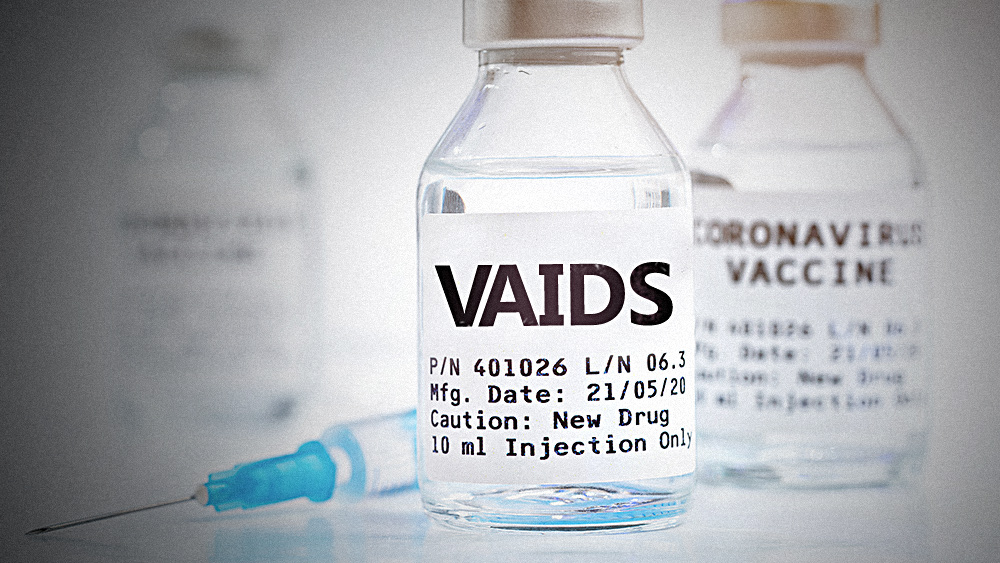Smoked herring in 3 states RECALLED over botulism risk
07/17/2025 / By Olivia Cook

- The FDA issued a Class I recall for contaminated smoked herring sold in NY, NJ, and CT. The fish was improperly gutted, creating ideal conditions for Clostridium botulinum toxin production.
- Ungutted fish (with intact organs) and repackaging without labels increased contamination risks. No illnesses were reported, but the recall was urgent due to lethal potential.
- The neurotoxin causes muscle paralysis, respiratory failure and death if untreated. Symptoms (e.g., vision issues, slurred speech) appear within 12 to 36 hours; fatality rates drop from 50 percent to five to 10 percent with prompt antitoxin treatment.
- Low-oxygen foods (canned goods, smoked fish) are high-risk. Past outbreaks (e.g., olives, nacho cheese) highlight failures in safety protocols during processing or storage.
- Proper handling, gutting and storing fish below 39 F (4 C), cooking to 158 F (70 C) and avoiding damaged/dubious packaging can prevent botulism. Transparency and regulation are critical.
The Food and Drug Administration (FDA) has announced a recall of smoked herring sold in three states after it was found that the fish was contaminated with the deadly Clostridium botulinum foodborne pathogen.
The regulator announced in June the Class I – the most serious level – for salted smoked split herring distributed by P East Trading Corp., based in the Bronx. The fish was sold in 81 cases across 69 retail locations in New York, New Jersey and Connecticut.
The recall was especially dangerous as the herring, which measured over five inches long, wasn’t gutted – a critical violation of food safety standards. Improper gutting left the internal organs intact, enabling C. botulinum spores to grow.
The fish was often repackaged in delis or retail counters, stripping away original labels and making it difficult for consumers to trace its origin. Although no illnesses have been reported yet, the risk was serious enough to trigger a full-scale recall.
Botulism is caused by a neurotoxin released by C. botulinum bacteria. This neurotoxin attacks the nervous system and can lead to full-body paralysis or death if not treated promptly. Once ingested, the toxin blocks signals from the brain to the muscles.
Symptoms, which usually appear within 12 to 36 hours, include:
- Blurred or double vision
- Drooping eyelids
- Slurred speech
- Muscle weakness
- Difficulty breathing or swallowing
- Nausea and vomiting
If untreated, the paralysis can spread to the lungs, causing respiratory failure. While the illness is rare – about 200 cases annually in the U.S. – it is deadly.
Without immediate treatment, up to 50 percent of cases can be fatal. But with proper medical care and antitoxin, that rate drops to about five to 10 percent.
The science behind the scare: How this happened
C. botulinum spores thrive in low-oxygen environments, liked canned foods, sealed jars or vacuum-packed fish and delis. When conditions are right (low oxygen, low acidity, moisture, warm temperatures), this bacterium can release the lethal neurotoxin.
In the case of the recent fish recall, the problem started with improperly gutted smoked herring. When fish are not eviscerated, the internal organs that naturally harbor more bacteria become a prime breeding ground for C. botulinum spores. Combine that with poor refrigeration and vacuum sealing and the toxin can grow and possibly multiply quietly.
Fish are high-risk because they often retain moisture and are stored without oxygen, conditions ideal for C. botulinum. This is especially true for cold-smoked or lightly salted fish, which may not be cooked again before eating. The risk rises significantly if the fish hasn’t been gutted completely, processed correctly or kept consistently cold below 39 F (4 C).
But botulism isn’t just limited to fish and seafood. Over the last century, some of the most devastating botulism outbreaks in U.S. history have come from everyday foods:
- 1919, canned olives: One of the earliest mass botulism outbreaks, causing 17 deaths, lead to the development of stricter food preservation regulations.
- 1977, hot sauce in Illinois: Botulism toxin formed in a commercially produced hot sauce, leading to multiple hospitalizations.
- 1978, smoked fish in Alaska: In Anchorage, 37 people were sickened and nine died after eating improperly stored salted whitefish, making the worst fish-related botulism outbreak in U.S. history.
- 2015, canned potatoes: At a church potluck in Ohio, botulinum spores in home-canned potatoes caused 29 illnesses and one death.
- 2017, nacho cheese in California: A gas station cheese dispenser became contaminated, leading to 10 confirmed cases and one death. (Related: Nacho cheese sauce responsible for sending 10 people to the hospital with BOTULISM.)
These outbreaks taught hard lessons. Botulism can form in a wide variety of foods, especially when home canning, fermenting or handling foods without proper safety protocols. Even commercial facilities are vulnerable if basic safety standards are not met.
A quick lesson in prevention and treatment
If symptoms are caught early, botulism can be treated with an antitoxin, which neutralizes the toxin in the bloodstream. But timing is everything: The antitoxin must be administered within 24 to 72 hours of symptom onset. In severe cases, patients may need mechanical ventilation for weeks or months until the toxin is flushed from the body and nerve function returns.
But botulism is completely preventable, with the right food handling practices:
- Store fish at temperatures below 39 F (4 C).
- Never eat fish that has not been gutted completely, especially if it is vacuum-sealed or smoked.
- Cook food to at least 158 F (70 C) for two minutes to destroy the toxin.
- Follow expiration and “sell by” dates and avoid foods from damaged packaging.
- Check refrigerators and packaging, especially for smoked herring or other smoked fish for the latter. When it doubt, throw it out or ask the store for details.
- Stick to retailers and brands that follow transparent, regulated food safety practices, especially for smoked, vacuum-sealed or imported fish.
- Don’t trust appearances. Botulism doesn’t give off a recognizable smell or taste. Always prioritize handling and source over “looks.”
With the right knowledge, you don’t have to live in fear. Food safety starts with education, regulation and transparency, and continues with informed consumers asking better questions and making safer choices.
Visit CleanFoodWatch.com for more similar stories.
Watch Brian Stemmler explaining what botulism is all about.
This video is from the Daily Videos channel on Brighteon.com.
More related stories:
Botulism can kill you – are you sure your preserved foods are safe? 8 Signs they aren’t.
Everything you need to know about botulism.
Botox injections can leak botulism toxin into the brain, warn scientists.
Sources include:
Submit a correction >>
Tagged Under:
big government, botulism, clean food watch, clostridium botulinum, Dangerous, Food and Drug Administration, food poisoning, foodborne illness, infections, neurotoxins, outbreak, Product recall, products, Recall, smoked herring, toxins, ungutted fish
This article may contain statements that reflect the opinion of the author





















